The Birth of Artifact No.825 by Artists “Legendary Group3”: The More You Suffer, The Less I Suffer.
-Performance Recording-🎥
The Derivation of Artifact No.825
How does the invention derives from
Based on the second fiction The Ones Who Walk Away From Omelas written by Ursula K. Le Guin, our group has adopted my idea about The Fire-Ice Concentric Circles. (The original version is showed below.)
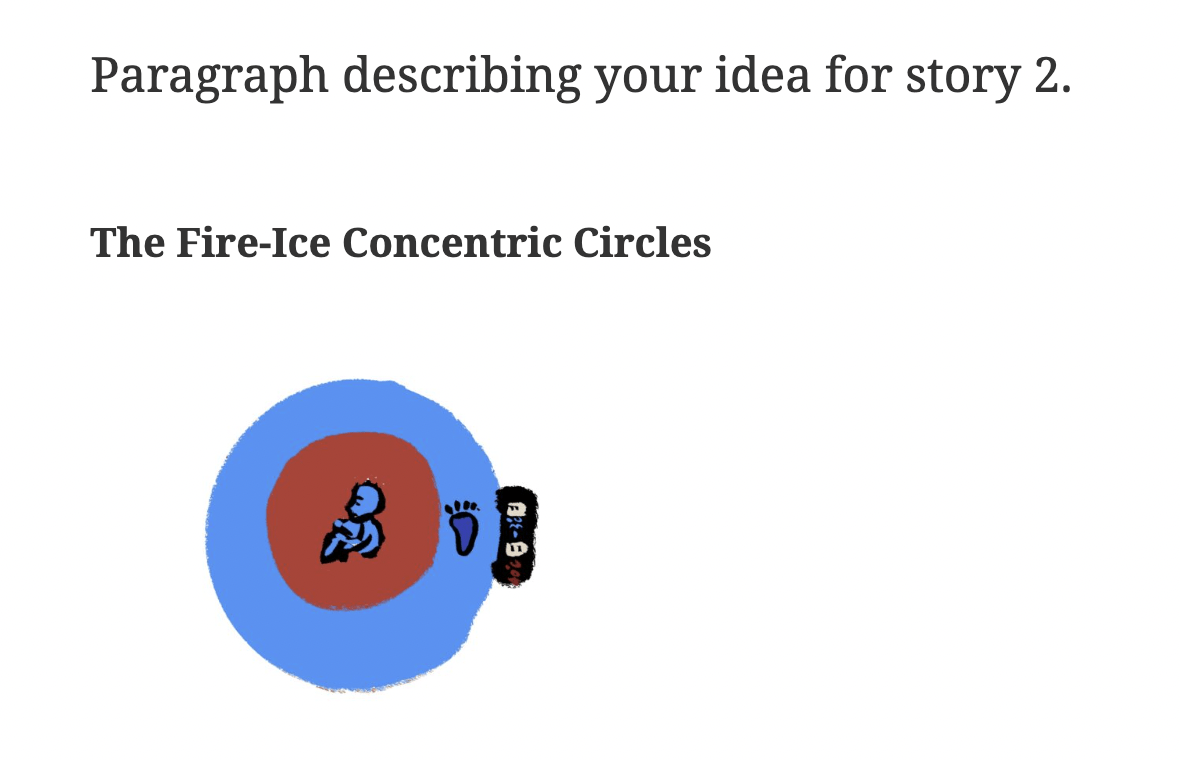
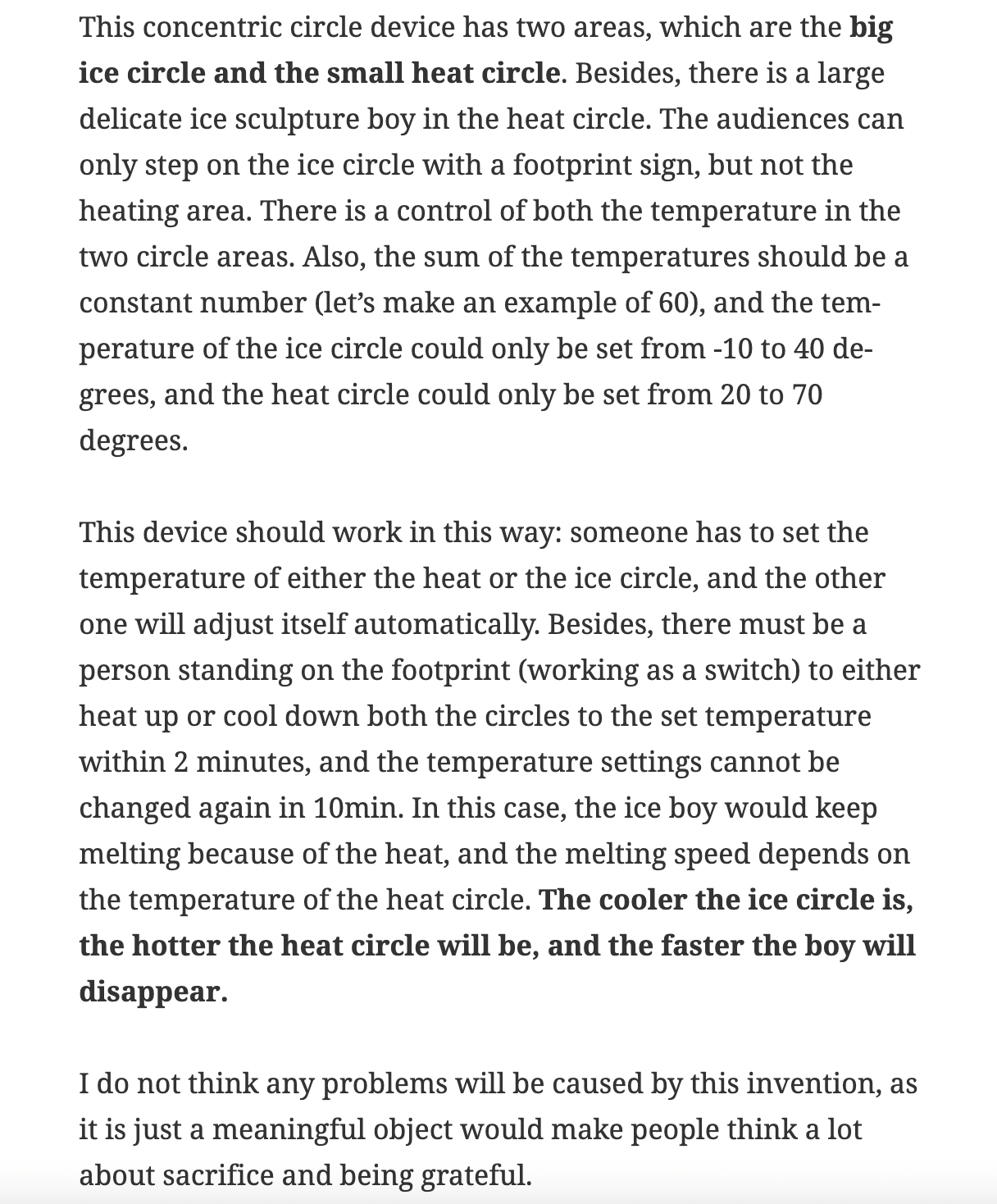
(https://wp.nyu.edu/nyushanghai-ruiqi/2022/09/23/my-ideas-for-interactive-artifact-according-to-3-short-fiction-stories/)
However, we have made some adaptations, which definitely made it more interactive (I will discuss about it later). We updated the whole prototype to a new version called Artifact No.825.
According to the fiction, the happiness of the citizens is related to the little boy who is trapped in a prison where he has no freedom at all. The poor little boy is living a suffering and pathetic life. However, the more the boy suffers, the more happiness the citizens would feel.
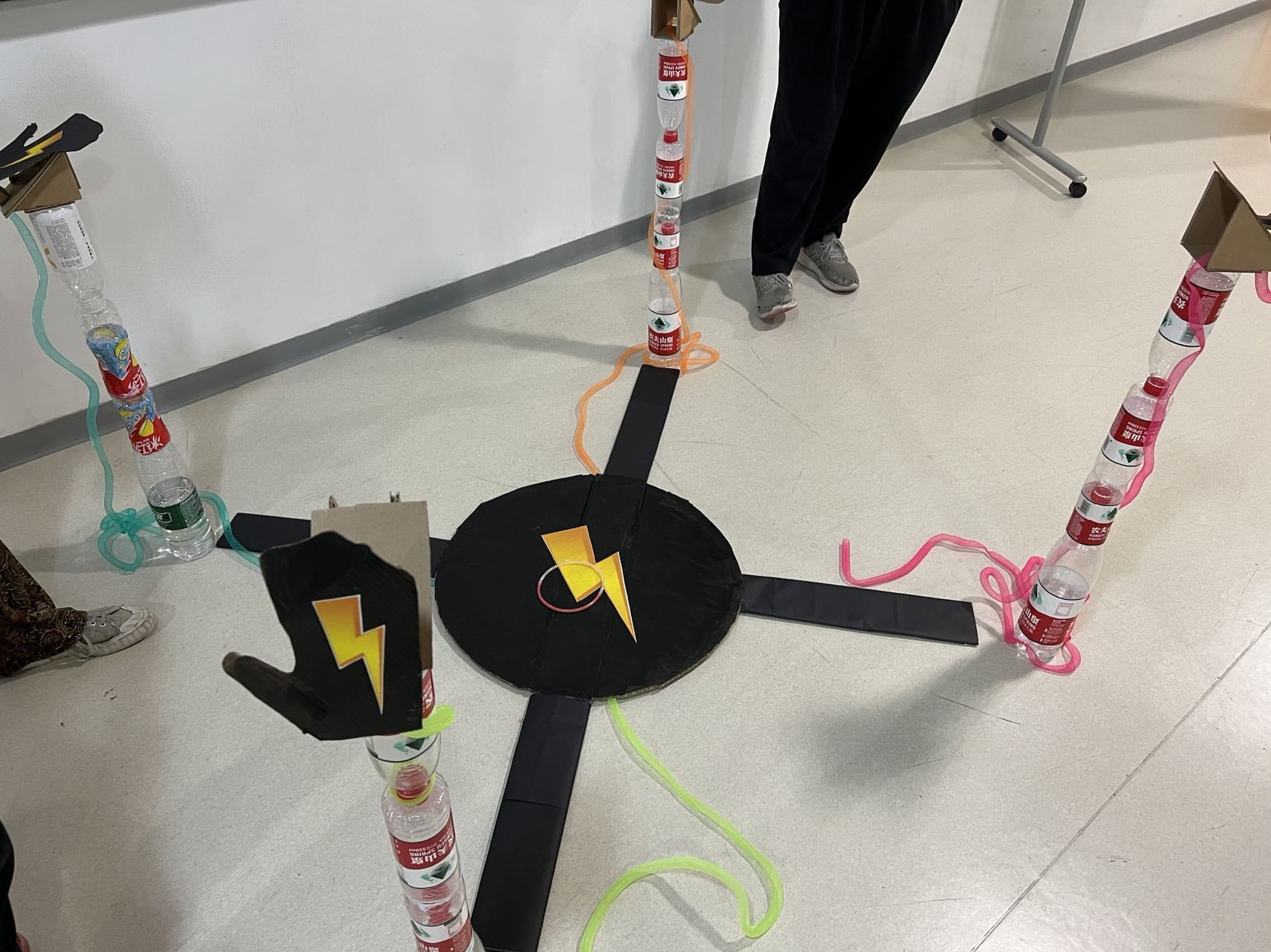
So, the whole device works in this way:
When a person stands on the central circle, other users could press the hand-shaped button. Once the button is pressed, soon the current will flow through the colorful wires and all the 5 users will feel the electric shock.
Additionally, the sum of current distributed to the 5 people is a constant number. The current distribution depends on how many people press the button/ How much force users are putting on the button. The more people/the more force the users put, the more electric shock the person in the middle will feel, and the less people who press the button would feel. (Pretty hard to explain how it works🤣)
The person in the middle is playing the role of the poor little boy in the fiction, and the people press the button are playing the roles of citizens.
How it was related to my previous researches
In terms of how our project is related to my interpretation of interactivity in previous researches, I would say I somehow apply the force system in “Zhu Meng Xing Hai” to Artifact No.825. The gravity sensor used in “Zhu Meng Xing Hai” actually inspired me a lot.
Similarly, the process of users put their hands on the button is what I called “input”. Then the sensors detects the force, which is what I called “compute”. Next, the current flows through the wires and the amount of current distributes is based on the number of people and how much force people applies…… And this is what I called “Output”. With these “input/output/compute” sections, I believe it successfully aligns with my previous definition of interactivity.
My idea sketches and my decisions
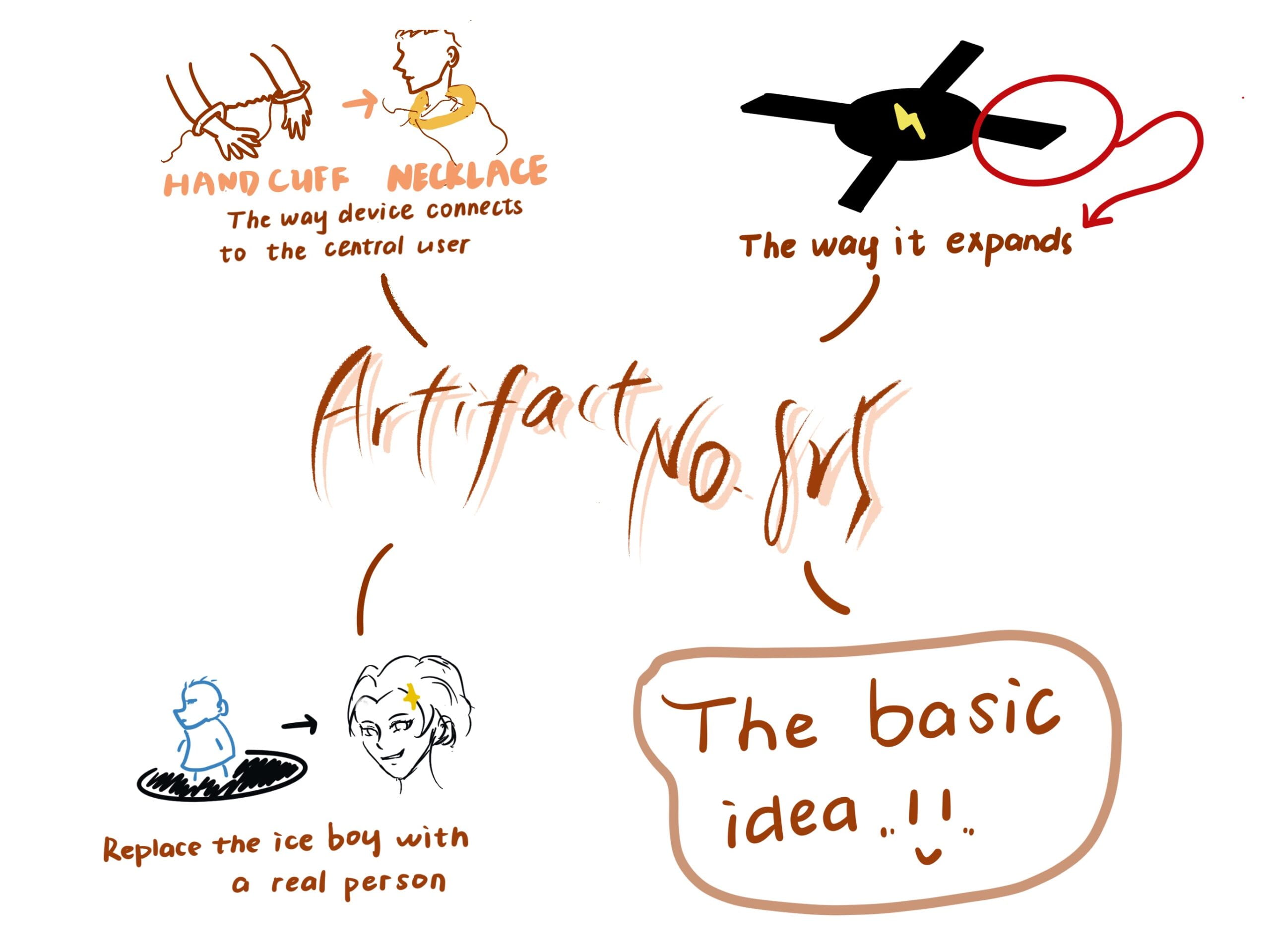
Personally, I think the artifact made by our group has both successes and failures. I believe it is pretty interactive, as we applied the conception of “input/compute/output” to it. And we have two ways to compute the current distribution, which made the artifact a lot more playable. Besides, it is closely related to the fiction and it actually has a deep meaning to make people think about it.
However, it still has some flaws. First of all, it was not made delicately, which might not look so beautiful. And the way it represent “suffer” is by current, but it is actually a little bit dangerous, and perhaps no one would like to try it in real life.🤣
My roles and contributions to the process
First of all, I am a material searcher and a decision maker during the process of producing our artifact.
My teammate Steve and I explored the B2 garage to look for empty bottles to make the column where we stick the button. (I have never been to B2, so it was actually fun to search for bottles in the garbage bag with help from our staff😆) Additionally, I made some changes to my original version (which was showed in my sketch above), and helped my teammate make some decisions.
The process of our team working together
After adding all our group members into the group chat, we had our first discussion on the night of Sep.29. During that meeting, each of us introduced our own ideas written in our previous blog, and we decide to adopt the The Fire-Ice Concentric Circles idea.
Soon our group members had a short meeting on Sep.30, and this was the shortcut of our meeting:
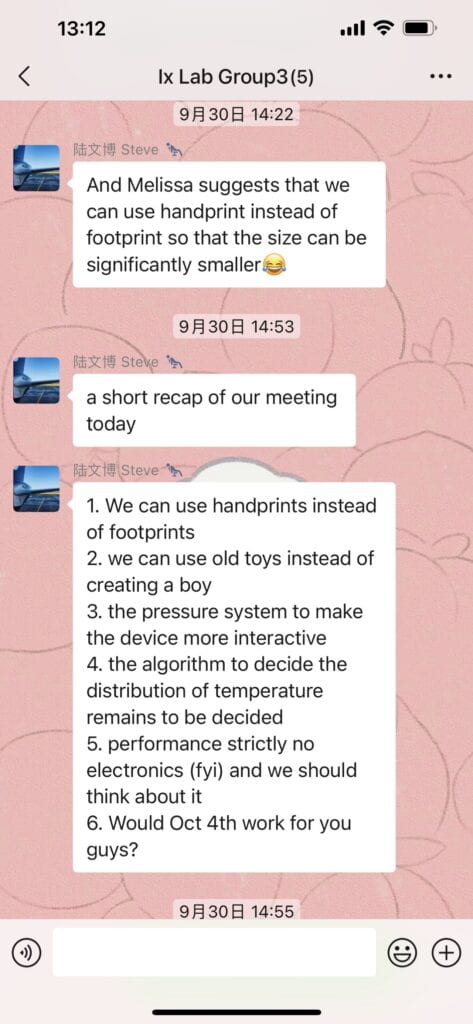
Then we went back to 826 IMA studio to make the prototype on Oct.4. And Steve came up with a genius idea: since it was really hard to perform in the system of temperature, we replaced the temperature with virtual current flow, thus it will be easier both in making prototype and performance.
We discussed about the size and shape of our prototype. Then I drew a sketch of our device with some detail missing. We had a role distribution, Each member made one of the bottle-button (let’s call it this way) and made a cut of the square cardboard to make it a circle with our toolkit. Steve and I took charge of finding empty bottles, Mellisa and Shelly cut detail parts of cardboard and Isabel took charge of writing script for performance.
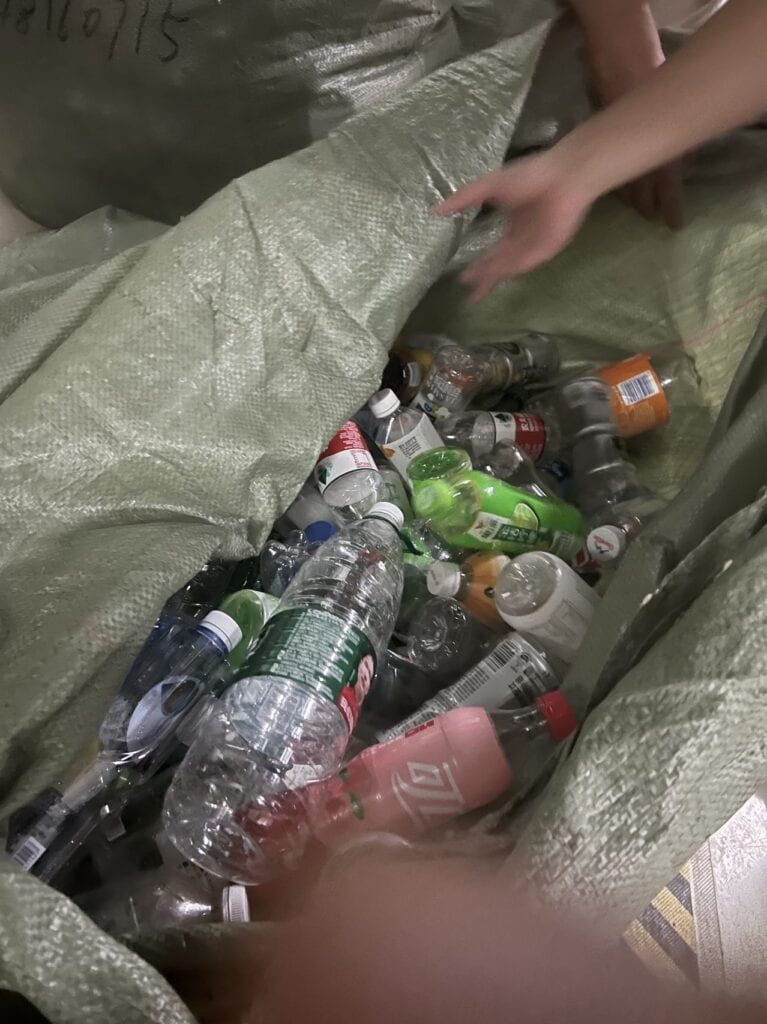
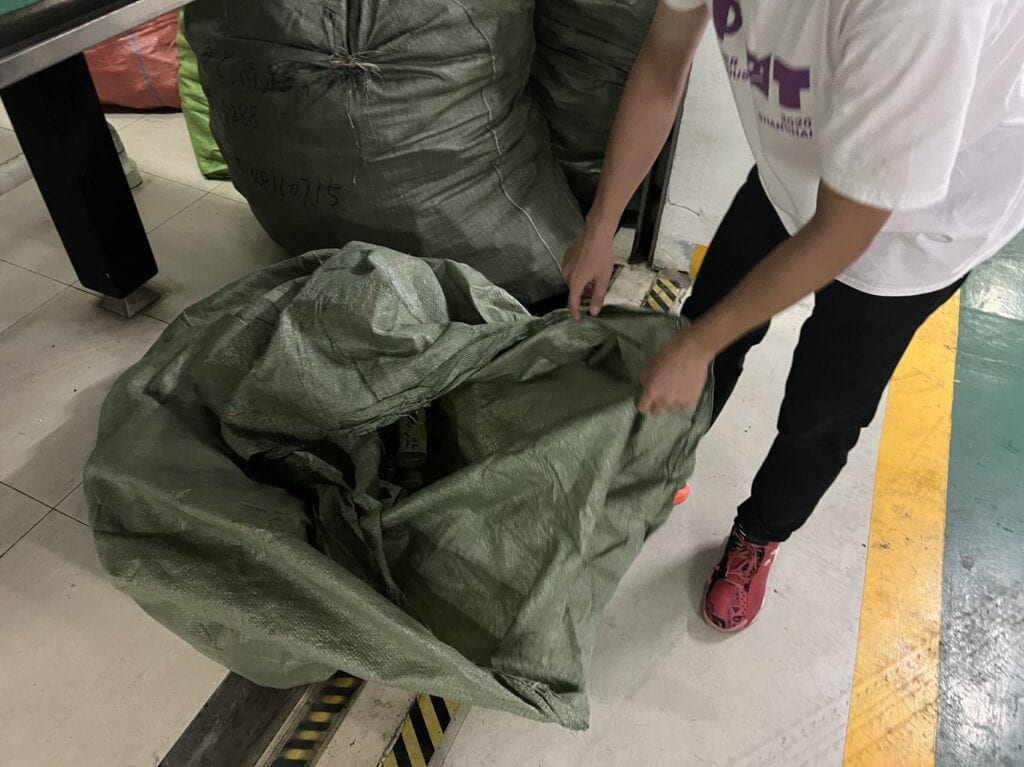
Then we had a little argument about whether we have to paint the whole device into black, as the cardboard itself looked a little bit messy. Eventually, we decided to paint it to make it prettier during performance.
Then we had our rehearsals on Oct.4. At first it was totally a mess, as everyone was talking in the same time. However, after several times of practice and discussions, we finally created a scenario about IMA students taking school trip to an art museum and found the “masterpiece” produced by world-renowned artist “Legendary Group 3”. And I played the role of a girl who is not that interested in art (Which is totally not true, just to meet the need of performance🤣).
A critical analysis and assessment of a performance from another group
An unforgettable performance to me was performed by the group “Stepping Stone”.
The project was about a human-shaped robot which is able to serve people who are petrified and are unable to move. The robot could meet any kind of need of human. For example, it can help user to get napkin on the table from meters away, it can move the petrified people to another direction or location, etc.
But the most amazing part I think is the robot could come up with several extend choices for an order. (For example, when the user ask for napkin, they can choose whether they want to approach the napkin or let the robot bring the napkin to them.)
In addition, when a person is 100% petrified, the robot will send the stone to the petrified people community (Can’t actually remember the exact name, but something like that), and dedicate itself to the next patient.
Their project closely related to the fiction story, as they showed how the robot works towards humans with different levels of petrifaction.
Personally, I would say this is a really impressive work. It’s wearable, and it is delicately made. The size is big so that I could clearly saw what did they do to the robot.
However, I do think it could be more interactive and more complicated than simply the robot helping users. The robot should be able to update itself through computing to better meet human needs. They should be able to remember their masters’ habits, and delete them before serving the next patient.
